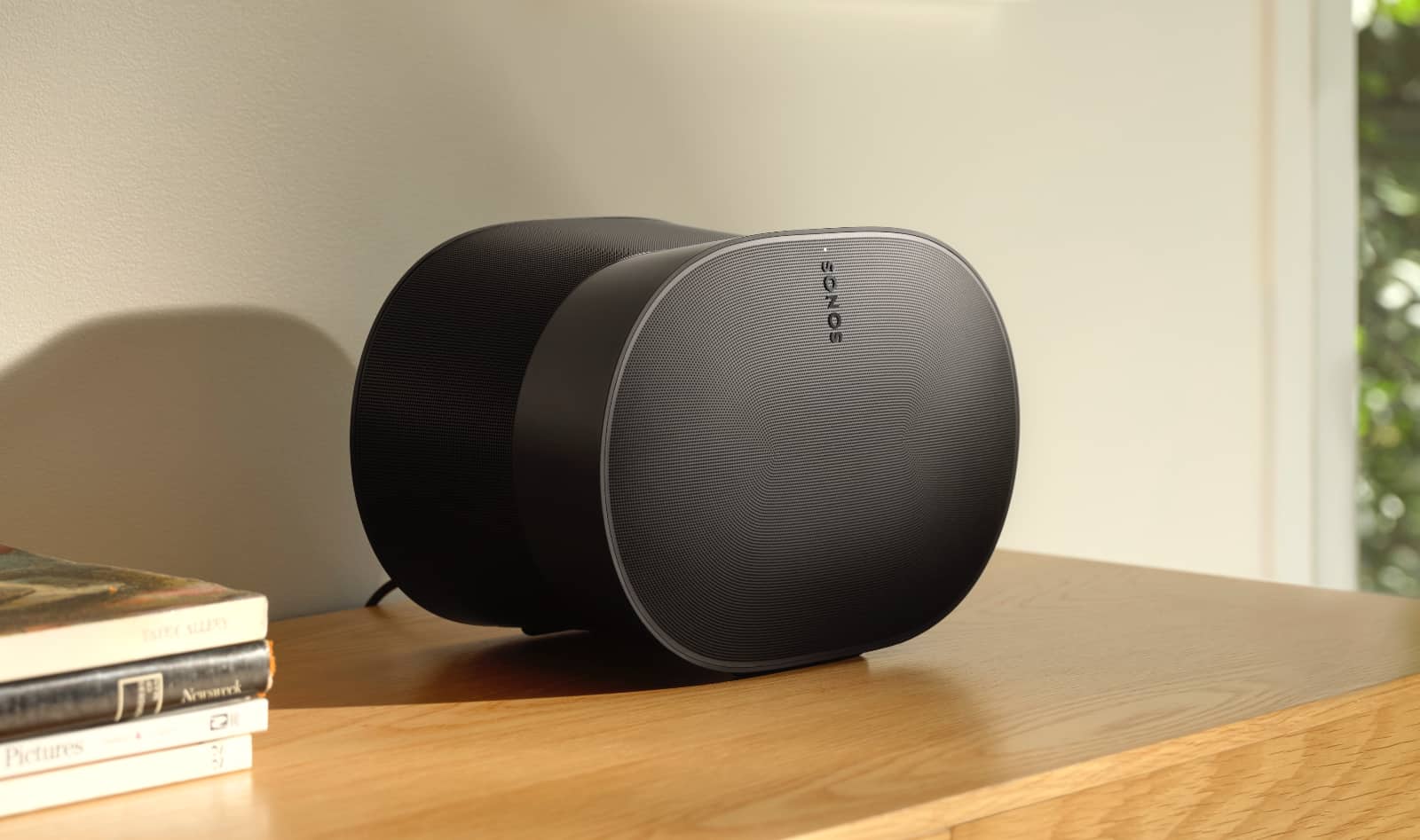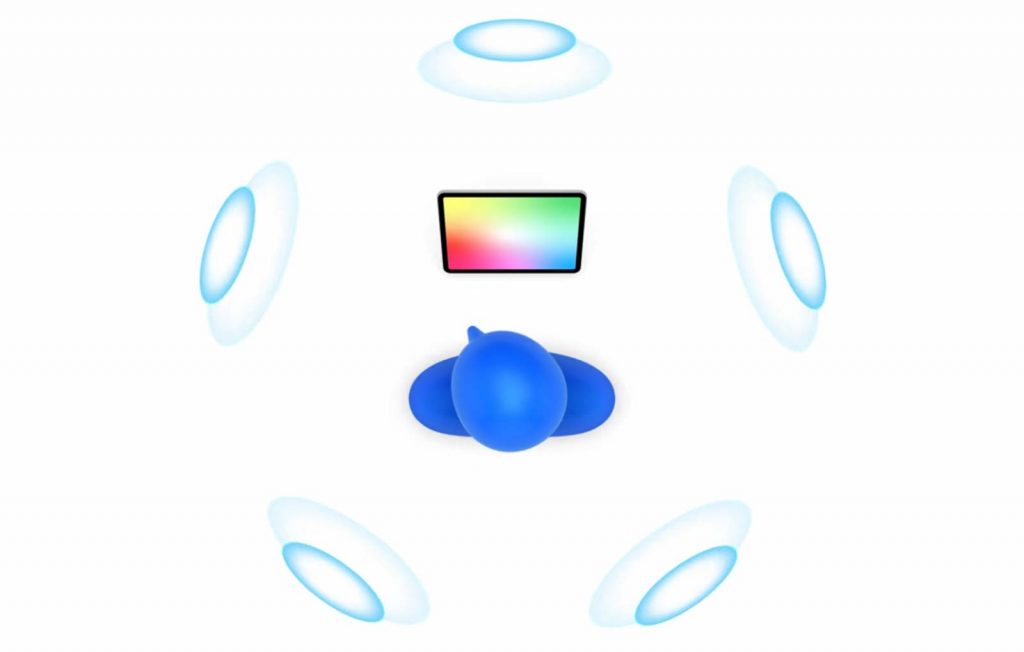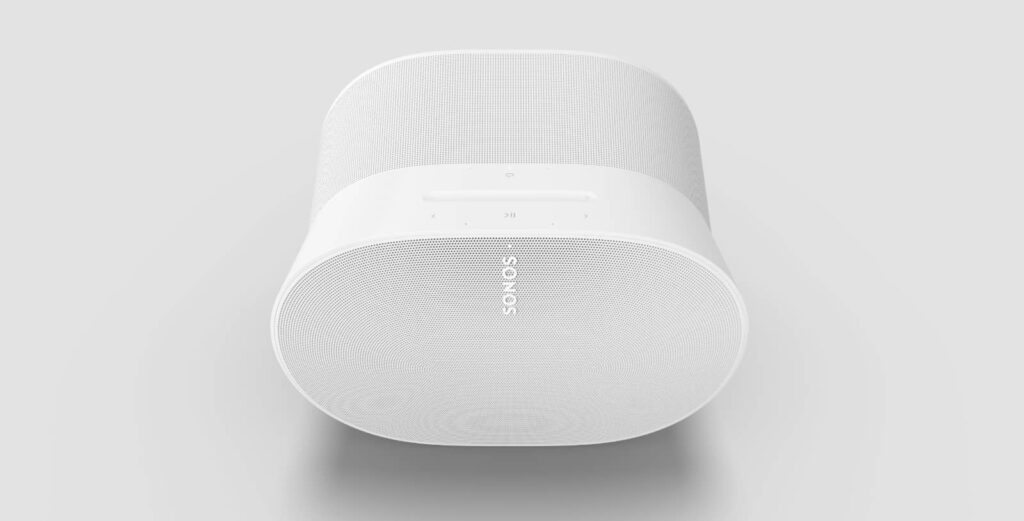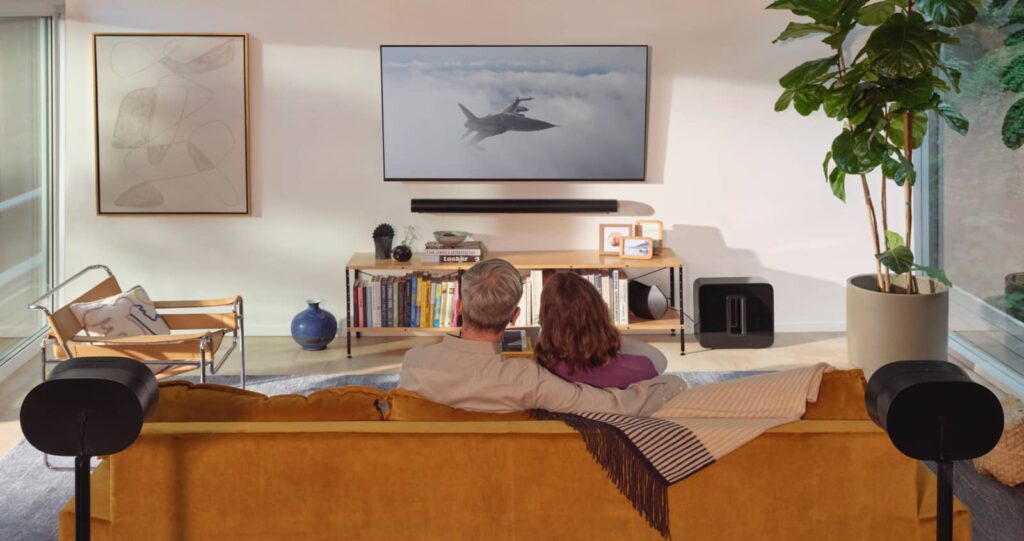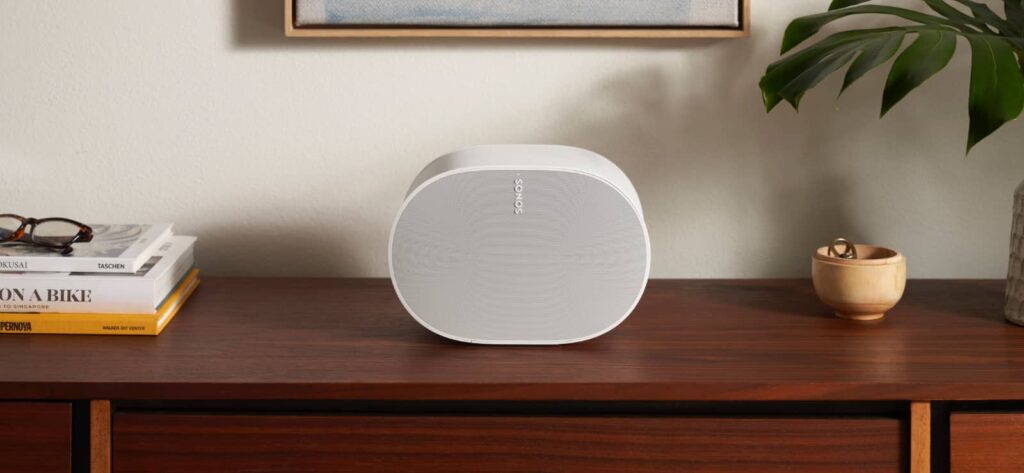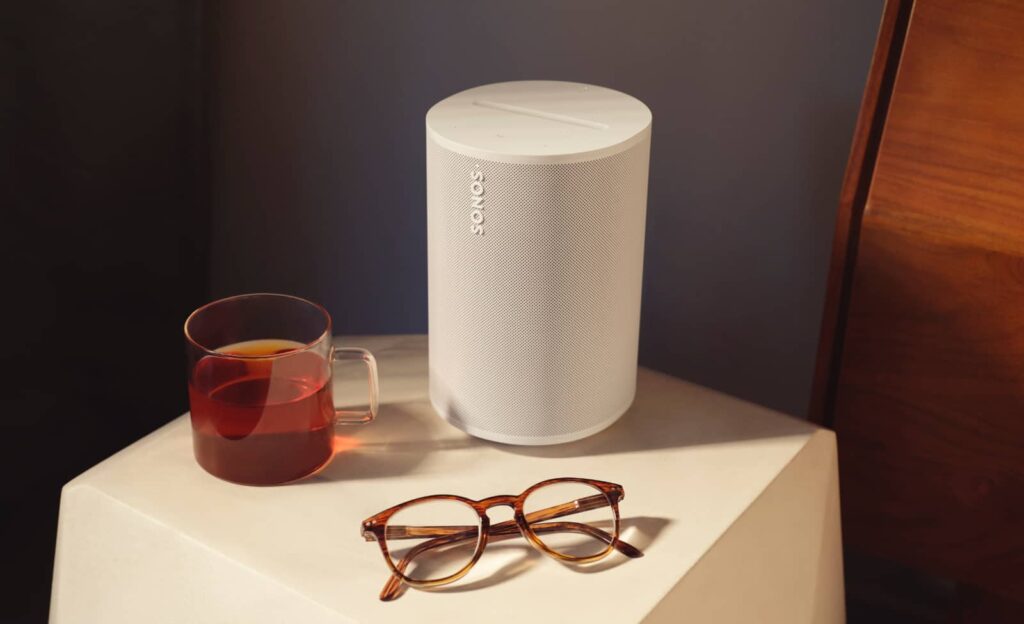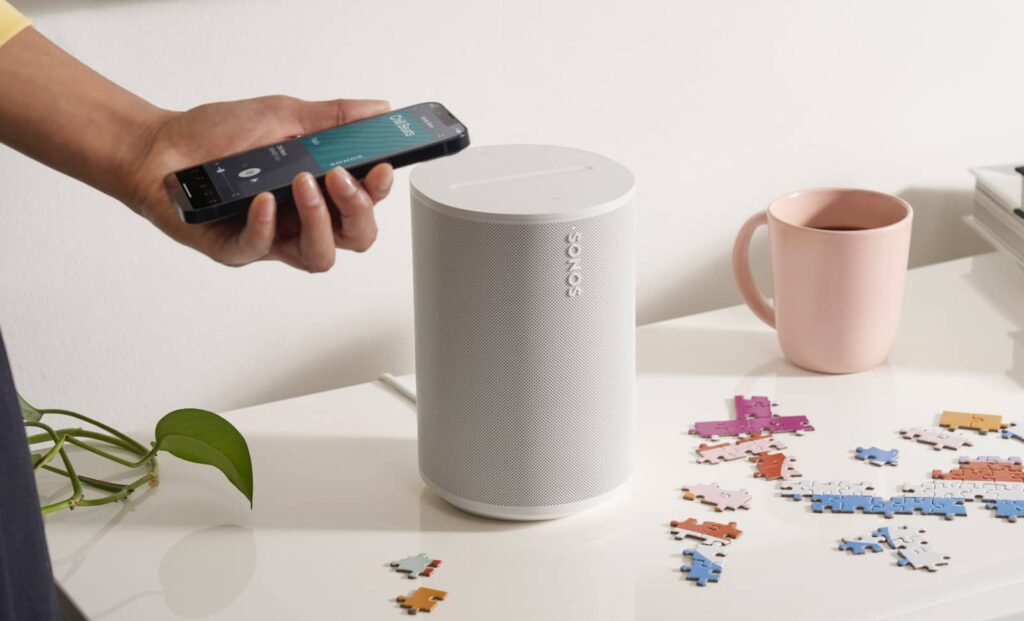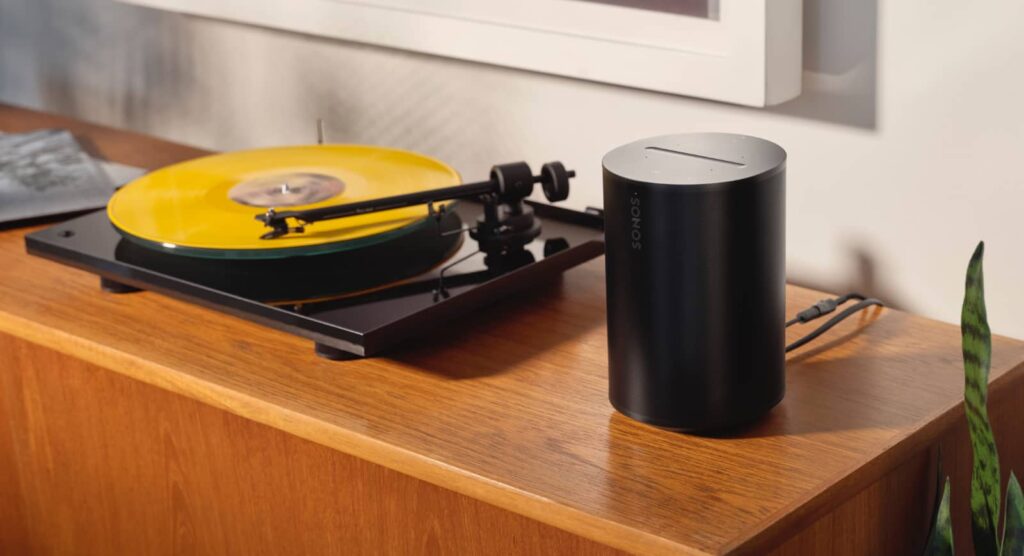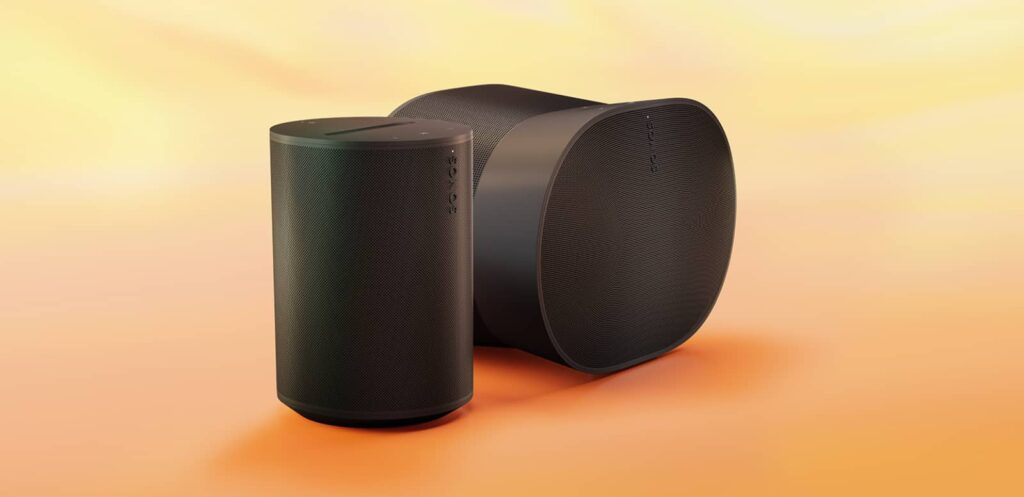A proper spatial sound experience is on the way for Sonos fans happy to spend on new speakers, as Sonos readies a new “Era” of multiroom sound.
The world of audio is changing, and while much of the focus is on carrying around sound with you on your head, it can evolve and improve beyond the headphones and earphones you wear.
Beyond the realm of wearable sound, there’s sound at home, as the humble speaker sees a change or two. Many of those changes have come from connection type — wireless — but there are other ways home speakers have evolved.
Multiroom technology allows you to expand your sound beyond one room, linking and grouping speakers so they talk to one another, spreading the sound across the home. And that’s not all.
Thanks to microphones and smart assistants, you can now talk to those speakers directly and ask them to play music. You only need to glance at a Google Nest Audio or an Amazon Echo Dot to see that, or even one of the new Apple HomePod speakers, and so on and so on, with plenty of choices in this category.
The sizes of speakers are also an area that has seen change, with technological progress and improvements allowing you to pack in quite a lot of sound in a very small space.
But there’s one area speakers are only beginning to scratch the surface in: spatial sound. Also known as 3D sound, spatial sound has the ability to convey audio in a way that feels like it encompasses and envelopes you.
Spatial vs stereo sound
Depending on how much of a fan of movie sound you are, it’s possible you’ve heard spatial sound in movies either at the cinemas by way of Dolby Atmos and DTS:X, or even at home with a specialised system that can fire sound up, bouncing audio off your walls and ceiling to create the idea that you, the viewer and listener, are sitting in a bubble of audio.
Movies is just one avenue, however, and spatial sound can also make a difference in music, where special renditions of tracks and albums are making their way out that deliver a spatial sound, too.
The approach is distinct from stereo which simply covers left and right, and still sounds amazing. Rather, spatial places the listener inside of a mix, as if you were sitting between the instruments and experiencing an almost binaural audio sensation.
Rather than feeling the music is loud for the sake of being loud, spatial music can feel more real because you’re inside of it, so to speak.
It’s been well over a year since Apple Music launched spatial audio with Dolby Atmos, providing newly remastered songs and albums built in this way, and if you own the right headphones and listen on an Apple device — phone, tablet or laptop — the experience can be eye-opening.
But over on speakers? It’s a very different experience.
Apple’s new HomePod can play spatial sound, but few other speakers can. The recent Amazon Echo Studio can handle it, but only on Amazon Music, and that service lacks the spatial audio offering locally. Meanwhile, Sony has 360 degree speakers, but the experience in using them isn’t great. You can also use a Sonos Arc or Sonos Beam — or any other spatial soundbar — connected to an Apple TV 4K to play spatial sound over Apple Music, but that’s roughly it.
If you want to play spatial sound out in the open outside of your headphones and with a speaker, you don’t have a lot of choices.
Fortunately, that looks set to change.
The spatial era with the Era 300
Looking a little different from the regular Sonos speaker is a new model on the horizon, the Era 300. More than “just another speaker”, and not quite a replacement for the Sonos Five, the Era 300 is something a little bit different.
Shaped a little like an hourglass, this is a speaker meant to sit horizontally (or landscape mode for folks used to phone lingo). This design allows Sonos to throw in support for spatial audio inside a speaker, and not unlike what it did with the Sonos Arc a few years ago.
Back in the Arc, Sonos made a soundbar with both stereo speakers and upfiring speakers, and it’s an approach many a spatial soundbar uses today.
In the Era 300, Sonos is using a similar approach, but making it all about the singular speaker, allowing one speaker to fire a spatial sound and bounce audio around you.
To do this, there are six class-D digital amps controlling four tweeters and two woofers, with these mostly firing left and right for stereo, though one tweeter fires forward and another fires up. That will cater for a bigger sound, and use the ceiling to bounce sound.
Join two Era 300 speakers together and you’ll effectively be able to create dimensional sound, and if you add it to an Atmos soundbar like the Arc, you can get even more spatial, expanding the 5.0.2 Sonos Arc to a 7.0.4 — seven channels surround, no subwoofer, four spatial — with the Sonos Arc and two Era 300 models. Grab one of last year’s Sub Mini subwoofers or a Sub Gen 3 and it’ll become a 7.1.4 system, making for a pretty sizeable sound.
They Era 300 will also do stereo sound, but interestingly, Sonos told Pickr that the Era 300 was optimised for spatial, with the Sonos app being upgraded to handle spatial audio directly from the service. That means you won’t need to plug your speakers into an Apple TV to get Atmos music, and can instead stream spatial directly through the Sonos app natively.
“Just like the shift from mono to stereo, spatial audio is the next evolution in listening – creating a sound experience that wraps you in music,” said Giles Martin, Vice President of Sound Experience at Sonos.
“As both creators and major streaming platforms embrace spatial audio for music, the time is right to create an out loud listening experience that delivers against the promise of this thrilling and creative format,” he said.
As to whether you’ll be able to get Sonos to play Dolby Atmos using your voice and a smart assistant, that remains to be seen, but Sonos is including a far-field microphone array with beamforming, and there’s a hardware switch to turn off the feature if you don’t need it, plus touch controls up top, too.
A new One in the Era 100
While the Era 300 kickstarts the spatial era for Sonos, the company is also revisiting one of its most popular speakers, the “one”. Depending on how far back your knowledge of Sonos goes, that’ll include the Play:1 before becoming the Sonos One, and even the Sonos One SL if you don’t care for a microphone or smart assistant in your speaker.
The one models have been a great entry-point for folks new to the Sonos system, and even handy for those who wanted a small speaker around the home. You can grab two Sonos One speakers for stereo pairing or use them as rear speakers in a Sonos soundbar setup, and they’re pretty convenient little things. The original Play:1 models even sported a humidity resistant design, making them handy for use in the bathroom.
But the design is a touch old, and as Sonos kicks off a new “era”, it’s also redesigning its “one” speaker with it, keeping the same width but making it slightly taller while matching the Sonos look right now.
So “one” becomes “one-hundred”, as Sonos looks set to sunset its Sonos One and replace it with the Era 100, which sports a similar look, but a few upgrades here and there.
You won’t find support for spatial audio in the Era 100, but it does include three class-D amps controlling two tweeters and one woofer, with another far-field microphone array for voice control and touch controls, as well. Sonos notes that the increased height of the Era 100 means it can get up to 25 percent more bass than what the Sonos One could deliver.
While it comes with a new name, the Era 100 may as well be the update of the Sonos One, and Sonos confirmed that the Era 100 will replace the Sonos One, with old stock gradually disappearing and selling out as the new models arrive.
TruePlay for all, Advanced TruePlay for iOS
One of the more interesting changes Sonos is making with the range has to do with its sound calibration technology “TruePlay”, which up until now has needed an iOS device.
The idea was simple enough: use your phone to record sounds emitted by your Sonos to configure the sound for your rooms and your environment. TruePlay is something Sonos has offered for years on its devices, but it has always been an iPhone thing, and Android users have been left out. It turns out, the vast assortment of microphones may have been the reason why.
“It has to do with how difficult it is to measure all the different microphones on Android devices,” said Kylie Muntean, an Audio Systems Engineer at Sonos.
To get around this, Sonos has built an automatic version of TruePlay as “Quick Tune” for all that can switch on when triggered by the app. It’s not quite like the always-on automatic TruePlay running on the portable Sonos Roam, but more a “there when you need it” option that can be activated via the app.
It’s definitely something, and useful for Android owners missing out on the feature, but iOS owners will still get a more advanced model, now named “Advanced TruePlay”.
“When you’re moving through the room [with Advanced TruePlay], you’re creating a model and fitting a model for the room,” Muntean told Pickr.
“When you’re using Quick Tune, you’re fitting to a model we’ve adapted. You’re only fitting to the model. It’s still way better than not running it,” she said.
More line-in for all
Sonos also has one more change in both the Era 100 and 300 worth talking about, particularly if you have other sources you like to run music from.
While the era of multiroom audio typically sees its users cueing music from cloud services such as Spotify or Apple Music, or maybe even a network drive, Sonos will have an optional accessory that’ll let you bring in music from other physical sources.
Essentially, Sonos will offer a line-in adaptor that works through the USB Type C port found at the back of the speaker, allowing you to plug in another source. That could be a record player, or even a projector, though you’ll need a 3.5mm auxiliary cable, as well.
There’s also support for Bluetooth on the speakers, something we’ve not seen on Sonos speakers beyond the portable Roam or Move, potentially giving you another way to get music from your phone and other devices over to the Sonos.
What we’re excited to see
While both speakers are interesting, the two that grab us most are the Era 300 and the Sonos Type C Line-In cable, and for different reasons.
On the one hand, we’re excited to be able to plug a record player directly into a small Sonos system, using it to get vinyl played around the house. You can already do this with either a Sonos Five, an older Play:5, or even a Sonos Amp, but to see this concept brought to less expensive speakers like the Era 100 is an interesting play.
With the Era 300, we’re not only excited to see how Sonos has managed to complete the spatial setup at home, but also how it can make the spatial music experience that much easier to listen to.
At present, the second-gen Apple HomePod is one of the only ways to listen to spatial with an Apple Music account, limiting access somewhat to folks in the Apple ecosystem only. You need an iPhone or iPad to set up a HomePod, so it’s primarily geared at Apple owners.
With Sonos supporting spatial, however, Apple Music subscribers on Android should have access to spatial, as well, and as other music services join in on the Atmos bandwagon, it should mean 3D music will be more accessible.
Some of that music just has to be heard, and while we can name a great ten albums worth listening to in Dolby Atmos, the recent remaster of The Beatles’ “1” by Sonos’ Giles Martin is also a fantastic listen that treats your ears with its spatial mix.
Australian pricing and availability for the Sonos Era 100 & 300
Of course, buying into these speakers will come at a cost, and that cost doubles if you opt for the stereo kit of two.
In Australia, the Era 100 will cost $399 each, while the Era 300 will arrive for $749 each, just under the $799 of the stereo-only Sonos Five, with availability of the speakers seeing release in Australia and New Zealand (and other countries) from March 28.
There’s no word on the price of the Sonos Type C Line-In cable yet, but we’ll let you know when we know.


